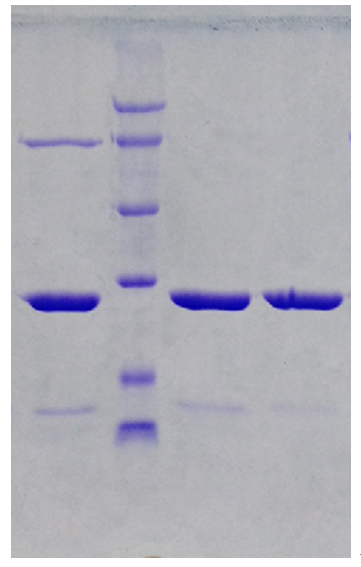
Description:
Description
Lysostaphin (LSS) is a kind of lysozyme secreted by Staphylococcus simulans that specifically dissolves Staphylococcus lysozyme. It was found by Schindler and Schuhard in 1964 from the culture of Staphylococcus simulans. LSS is a zinc containing endonuclease that cleaves the "glycyl pentapeptide" bond of staphylococcus peptidoglycan, causing bacteria to swell, crack and die. For example, it can specifically kill Staphylococcus aureus and Staphylococcus epidermidis, including the cell wall of methicillin resistant Staphylococcus aureus (MRSA) and vancomycin resistant Staphylococcus aureus (VRMA) that can cause fatal infection. The enzyme can also cleave the glycine peptide bond of the cell wall of other gram-positive bacteria, and hydrolyze glycine rich proteins, such as insoluble elastin. This product is a high purity and high activity lysostaphin produced by genetic engineering technology, without animal origin material.
Appearance
White or pain white lyophilized powder.
Package
1g/bottle
Specifications
One unit of lysostaphin activity is defined as the amount of preparation causing 0.01 reduction of turbidity of 1ml S. aureus cell suspension at A620 per minute at 37℃.
Application
1. Daily bactericide: the enzyme can be used for antibacterial gauze, oral cleaning solution, daily chemicals and cosmetic additives to play an antibacterial and bacteriostatic role;
2. In the fields of clinical examination and scientific research;
3. Used as food preservative.
Stability
Stable at 2~8℃for more than two years since report.


